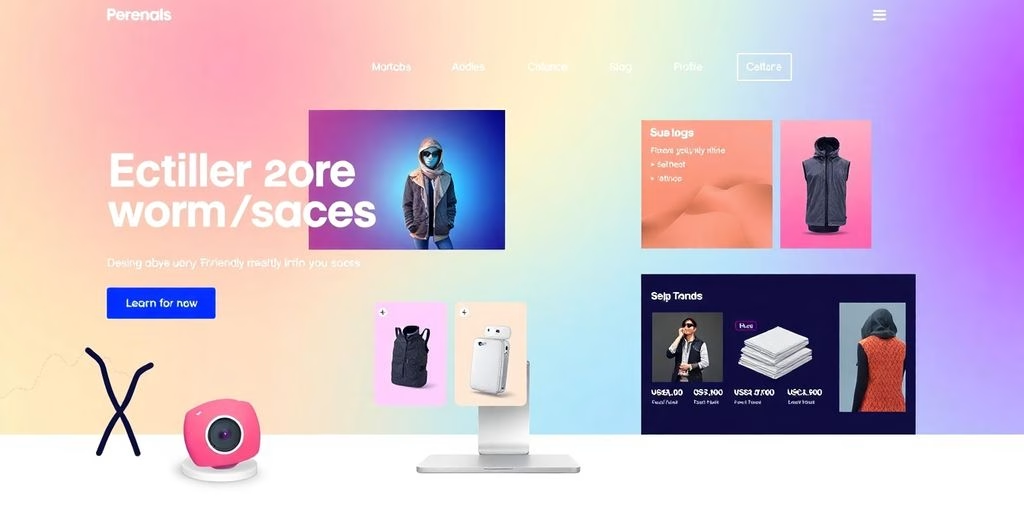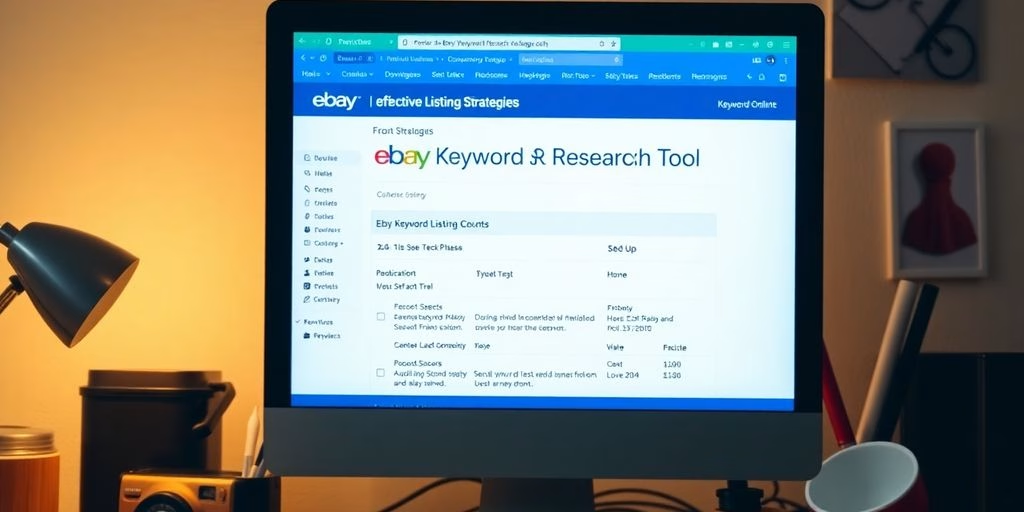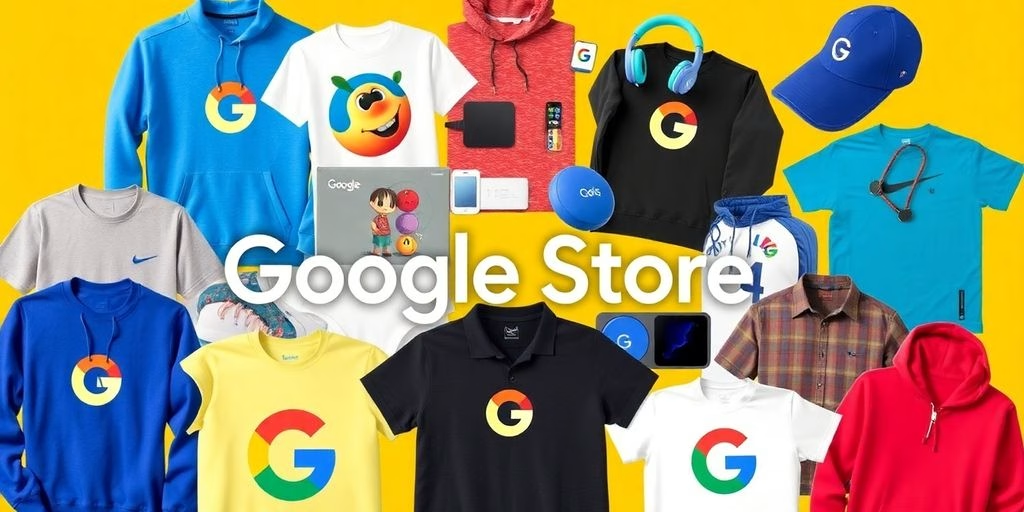With the average reader likely to skim rather than delve deeply into content, effective blog formatting becomes critical. This article explores the essential strategies for structuring and presenting your blog content in a way that engages readers, encourages interaction, and enhances readability. From the magnetic pull of a well-crafted introduction to the strategic use of multimedia and SEO, learn how to transform your blog into a reader’s delight.
Table of Contents
ToggleKey Takeaways of Blog Formatting
- Structure your blog formatting with a compelling introduction, informative body with subheadings and bullet points, and an engaging conclusion with clear calls-to-action.
- Enhance the visual appeal and understanding of your content by incorporating relevant images, videos, and infographics.
- Optimize your blog formatting for search engines with strategic keyword placement, meta descriptions, title tags, and a network of internal and external links.
- Maintain readability and skimmability by using white space effectively, employing bullet points for brevity, and avoiding dense paragraphs.
- Invite reader participation with interactive elements such as comment sections, subtle calls-to-action, and interactive polls or quizzes.
Unwrapping the Secrets of Blog Formatting

Crafting a Magnetic Introduction
The first few sentences of your blog post are the bait that lures readers into the depths of your content. Crafting a magnetic introduction is not just about being catchy; it’s about making a promise to your reader that the journey ahead is worth their time. To ensure your introduction hooks your audience effectively, consider these points:
- Create Intrigue or Curiosity: Start with something that tickles the imagination. Whether it’s a startling fact, a rhetorical question, or a short anecdote, your goal is to spark curiosity and encourage further reading.
- Be Clear and Concise: Your readers are on a quest for information or entertainment. Don’t meander—get to the point quickly, and make it clear what value they’ll gain from reading on.
- Align with Your Headline: The promise made by your headline should be fulfilled by your introduction. This alignment builds trust and sets the stage for a satisfying read.
By avoiding clichés and maintaining consistency between your hook and thesis, you can craft an engaging and cohesive introduction that captivates readers and prepares them for the journey ahead in your blog post.
Mastering the Art of Subheadings and Bullet Points
In blog formatting, subheadings are your guiding stars and bullet points your trusty companions. Subheadings lead the way, carving out a path through your content, making it accessible and inviting. They’re not just functional; they’re an opportunity to inject personality and pique interest.
Bullet points, on the other hand, are the snackable treats of the text world. They break down complex ideas into bite-sized pieces that are easy to digest. Here’s why you should befriend them:
- They create a visual break, making your content less daunting.
- Bullet points highlight your key takeaways, ensuring they stand out.
- They cater to the skimmers, who might just stick around if something catches their eye.
Embrace the power of structure. Your readers will thank you for a well-organized post that respects their time and attention span.
Remember, an easy-to-read blog post comprises concise sentences and short paragraphs, with strategic integration of bullet points and subheadings to boost readability. Use these tools wisely, and watch your engagement soar.
Calls-to-Action that Resonate
A blog post without a strong call-to-action (CTA) is like a firework that fizzles out before the grand finale. To leave your readers with a lasting impression, your CTA should be as compelling as your opening line. Here’s how to make sure your CTAs create a spark:
- Be clear and specific. Vague phrases like “Click Here” can be confusing and don’t tell people exactly what to do. Instead, use clear instructions that resonate with the audience.
- Highlight your CTA. It should be easy to spot, using different fonts, contrasting colors, or buttons. Place it strategically within your blog post, whether at the end, the beginning, or even as a pop-up.
- Create urgency. Phrases like “Get Started Today” have been shown to increase conversions significantly. It’s the difference between a suggestion and an irresistible invitation.
Remember, your CTA is not just a sign-off; it’s the bridge between your content and the action you want your readers to take.
By crafting a CTA that’s clear, conspicuous, and urgent, you’re not just ending your post; you’re beginning a relationship with your reader. And that’s the kind of conclusion that turns one-time visitors into loyal fans.
Harmonizing Blog Formatting with Multimedia

Choosing Images that Speak Louder than Words
In the bustling bazaar of the internet, your blog’s images are the vibrant stalls that catch the eye of the wandering reader. A captivating featured image can act as a siren call, luring in curious minds to explore the depths of your written word. But it’s not just about the allure; it’s about the relevance. An image that complements and reinforces your content can transform a mere glance into a meaningful engagement.
- Start with a strong featured image that sets the tone.
- Intersperse relevant images to keep interest piqued.
- Align images with text to guide the reader’s journey.
Remember, adding images to a blog post can increase views by a staggering 94%. This isn’t just about aesthetics; it’s about providing a richer, more immersive experience that resonates with your audience and keeps them anchored to your narrative.
Embedding Videos for a Cinematic Twist
In the age of information overload, a well-placed video can be the visual pause that keeps your readers hooked. Video content is 50 times more likely to drive organic traffic than plain text, making it a golden ticket to reader engagement. But how do you embed a video without it feeling like a clunky afterthought?
Embedding a video should feel as seamless as the narrative of your blog. Here’s a simple guide to get you started:
- Locate the video URL you wish to embed.
- Click the ‘Embed’ button or choose the embed option from a menu.
- Paste the URL into the designated box on your blog platform.
- Customize the appearance to match your blog’s style.
Remember, only 19% of bloggers are using videos, so by incorporating them, you’re already stepping ahead of the curve.
While the steps may seem straightforward, the devil is in the details. For instance, on platforms like WordPress, you can paste your video URL into the box, click ‘Embed’, and voila—your cinematic content is ready to captivate.
Infographics: The Power of Data Visualization
Infographics are not just eye candy for your blog; they are the heavy lifters in the gym of data presentation. Simplifying complex information into digestible visuals, they can transform a snooze-fest of stats into a compelling story. Consider these points when using infographics:
- They make social sharing a breeze, as people love to spread visually appealing content.
- Consistency with your brand image is key; your infographics should wear your brand’s colors and style like a well-tailored suit.
- Don’t forget to optimize for SEO; your infographics want to be found just as much as your text does.
Remember, an infographic without a clear content goal is like a ship without a rudder; it might look impressive, but it won’t go anywhere meaningful.
Lastly, always align your visuals with the narrative arc of your post. They should not only stand out but also stand for the message you’re conveying. By doing so, you ensure that your infographics are not mere decorations but pivotal elements that enhance understanding and retention.
SEO: Blog Formatting for Reader Engagement

Strategic Keywords Throughout Your Blog Formatting
The art of keyword placement is akin to seasoning a gourmet dish; a pinch too little and it’s bland, a dash too much and it’s overwhelming. Your primary keyword should grace your content’s opening act, ensuring that both readers and search engines are captivated from the start. But the performance doesn’t end there. Like a skilled chef, you must weave your keywords throughout the narrative, from the succulent title to the savory headings, and into the body where they must be sprinkled with a master’s touch.
- Use long-tail keywords to target specific niches.
- Integrate keywords into your title, headings, and content.
- Employ variations to maintain reader interest and avoid repetition.
- Prioritize readability and user experience over keyword density.
Remember, the goal is not to create a keyword-laden monstrosity but to craft a piece with blog formatting that resonates with both search engines and human readers alike. The true secret lies in the balance—ensuring that your keywords act as silent conductors, guiding your audience through the symphony of your content without ever disrupting the melody.
Blog Formatting and the Role of Meta Descriptions and Title Tags
In the grand theater of SEO, meta descriptions and title tags are the billboards that entice the audience. Your title tag is the marquee, announcing the main attraction, while the meta description provides a tantalizing teaser, urging the searchers to buy a ticket to your show. Here’s how to make them spotlight-worthy:
- Title Tag: Your page’s headline act. Keep it under 60 characters to ensure it’s fully visible in search results.
- Meta Description: A backstage sneak peek. Aim for under 155 characters to captivate without giving it all away.
Crafting a meta description that sings is like writing a hit chorus. It sticks in the mind and draws the crowd.
While meta descriptions may not directly influence rankings, they’re pivotal in the click-through concerto. A Meta Description is an HTML element that summarizes your web page, and it’s your first chance to strike a chord with potential visitors. Meta tags, especially the title tag and meta descriptions, are an important component of on-page optimization, each playing a distinct role in the symphony of search.
Link Building: Blog Formatting for a Connected Web
In website content, link building plays a starring role, weaving a network of connections that search engines can’t resist. Quality trumps quantity when it comes to backlinks; it’s about securing endorsements from the web’s leading authorities. Here’s how to craft a link building strategy that’s both effective and ethical:
- Guest posting on industry-respected blogs to share your expertise.
- Producing content so good that others can’t help but link to it.
- Partnering with influencers to amplify your reach.
- Steering clear of shady tactics that could lead to search engine penalties.
Remember, a well-constructed web of backlinks not only elevates your SEO status but also enhances the user experience by guiding visitors through a labyrinth of informative and relevant content.
By sidestepping common pitfalls and focusing on genuine, value-driven connections, your blog can achieve the visibility it deserves. Embrace the art of link building and watch your site ascend the search rankings.
The Etiquette of Blog Formatting: Keeping It Classy and Skimmable

Blog Formatting using White Space and Text
In the realm of blog formatting, white space is your silent partner, whispering elegance into your layout. It’s not merely empty space; it’s the canvas on which your words dance. Proper use of white space enhances aesthetics, navigation, and focus on important elements, building trust with visitors. It acts as a silent guide, leading users through your content with grace and purpose.
White space is far from being a void; it’s a strategic tool that creates a harmonious and balanced layout.
To achieve this balance, consider the following points:
- Use margins to frame your title and text, allowing the reader’s eyes to easily focus.
- Stick to readable fonts like sans-serif for body text to complement the white space.
- Craft clear, concise subtitles to provide structure and make content digestible.
Remember, the dance of white space and text is about creating rhythm and flow. When done right, it guides the reader effortlessly from start to finish, leaving them with a sense of clarity and satisfaction.
Blog Formatting of Bullet Points
In the bustling bazaar of blog content, bullet points are like neon signs that guide the reader’s eye to the most important stalls. They’re not just a stylistic choice; they’re a strategic tool for crafting content that sticks. Here’s why you should enlist these little dots:
- They simplify ideas, making complex information more approachable.
- Bullet points stand out from the rest of the text, acting as visual pit stops.
- They encourage brevity, ensuring each point is a nugget of clarity.
When used effectively, bullet points can transform a monolithic block of text into an inviting landscape of insights.
Remember, the goal is to keep it clear and concise. As the sages of BlogPilot say, “Keep it Clear: Craft concise and symmetrical points for maximum impact.” And yes, it’s perfectly acceptable to use bullet points in news articles for their scannability. So go ahead, give your readers the gift of brevity with bullet points that deliver your message with precision.
Avoiding the Dreaded Wall of Text: Paragraphs that Breathe
In blog formatting, the ‘wall of text’ is akin to the boogeyman, lurking in the shadows to scare away potential readers. Keep Sentences Short and Paragraphs Shorter. This isn’t just a tip; it’s a lifeline for your audience’s attention span. By breaking up your text, you create pockets of breathing room for the reader’s eyes, making the content more approachable and digestible.
To ensure your paragraphs are as welcoming as a cozy reading nook, consider these points:
- Aim for 2–3 sentences per paragraph.
- Use bullet points to highlight key information.
- Embrace white space – it’s not empty; it’s full of potential.
Remember, a paragraph is a pause, not a marathon. It’s the gentle tap on the shoulder, not the incessant poking that says, “Hey, this bit is important.”
Interactive Elements: Inviting Readers into the Story

Blog Formatting for Comment Engagement: Fostering a Community
Engaging with your readers goes beyond just crafting content; it’s about creating a dialogue. Engaged readers are more likely to share and link back to your content, amplifying its reach and SEO impact. Here’s how to turn your comment section into a bustling forum:
- Link to the Discussion: Start a new post by directing your readers to an engaging conversation happening in the comments. This not only highlights reader contributions but also encourages more interaction.
- Respond Promptly: Show your readers that their input is valued by replying to comments quickly. This timely engagement fosters a sense of community and keeps the conversation flowing.
- Highlight Top Comments: Feature standout comments in your blog posts or social media to recognize and incentivize quality contributions.
Remember, the comment section is where the heart of your community beats. Nurture it with care and watch as it transforms passive readers into active participants.
By implementing these strategies, you’ll not only boost engagement but also signal to search engines that your content is resonating with an audience—a key factor in SEO performance.
Calls-to-Action that Don’t Scream Desperation
In the delicate world of blog CTAs, there’s a fine line between persuasive and pushy. Your call-to-action should whisper, not yell. It’s about guiding your readers with a gentle nudge rather than a forceful shove. Here’s how to strike that perfect balance:
- Be Clear and Direct: Use concise language that leaves no room for confusion about what you want your readers to do.
- Create a Sense of Urgency: Without resorting to panic-inducing tactics, encourage immediate action with phrases like ‘Limited time offer’.
- Pick CTA Colours Wisely: The right color can make your button stand out without looking like a sore thumb.
Remember, the goal is to make the reader feel like they’re making the choice themselves. A well-crafted CTA respects the reader’s autonomy while making the next step irresistible.
Emotive language and strategic placement are your allies in this endeavor. Place your CTA where it naturally fits into the flow of your content, and make sure it resonates with the audience. A/B testing can be a powerful tool to discover what works best, revealing the subtle nuances that lead to higher conversions.
Using Polls and Quizzes to Spark Curiosity
Interactive content like polls and quizzes can transform passive readers into active participants. Embed a quick poll or survey in your post to show that you value their opinions. This simple act can skyrocket engagement, making your blog formatting into a two-way conversation.
Incorporating polls in your blogs not only engages your audience but also drives traffic. It’s a strategy that turns the mundane into the interactive, creating a dynamic reading experience. Here’s how you can leverage these tools effectively:
- Ask provocative questions that stimulate curiosity and encourage contemplation.
- Share personal anecdotes or experiences to establish a connection.
- Introduce fascinating facts or surprising statements to challenge conventional wisdom.
By inviting readers to contribute their thoughts, you’re not just sharing information; you’re creating a community around your content.
In the realm of storytelling, interactive elements are not just embellishments; they are invitations to your audience to become a part of the narrative. By weaving interactive touchpoints throughout your content, you encourage readers to engage, react, and immerse themselves in the experience.
Don’t let your story end on the page; extend an invitation to your readers to continue the journey with you. Contact us now to discover how we can help you create captivating stories that resonate and engage. Let’s achieve remarkable success together!
Conclusions
In blog formatting, your post is both a needle and a thread—piercing through the fabric of information overload and weaving together insights that captivate and educate. Remember, dear reader, the power of formatting is not just in the beauty of its structure, but in its ability to guide the skimming eye and turn passive onlookers into active participants.
So, wield these tips like an artist’s brush and a scientist’s beaker: with precision and creativity. And when your readers linger on your last sentence, make it count—invite them to comment, share, or simply bask in the afterglow of your well-crafted words. Until next time, keep your paragraphs short, your bullet points sharp, and your call-to-actions as enticing as a cliffhanger in a binge-worthy show.
FAQs
How can I craft a blog post that readers actually want to read?
To craft a compelling blog post, start with a magnetic introduction that hooks your reader. Use subheadings and bullet points to structure the body for easy skimming. Incorporate multimedia elements like images and videos to complement your text. Finally, conclude with a call-to-action that resonates with your audience without being too forceful.
What are the essential elements of blog formatting and structure?
The essential elements include a strong introduction with a hook, a well-structured body using subheadings (H2) and subsections (H3), bullet points for clarity, bold text for emphasis, hyperlinks for further reading, and short paragraphs. Don’t forget to use white space effectively and end with a conclusion that encourages engagement.
How important are SEO and keywords in blog formatting?
SEO and keywords are crucial for blog formatting as they help improve your post’s visibility on search engines. Strategically sprinkle keywords throughout your content, optimize meta descriptions and title tags, and engage in link building to create a connected web of content that intrigues and retains readers.
What role do multimedia elements play in a blog post?
Multimedia elements such as images, videos, and infographics play a significant role by breaking up text, adding visual appeal, and enhancing the reader’s understanding of the content. They provide a richer, more immersive experience that can help keep readers engaged and encourage them to return for more.
How can I make my blog formatting more interactive and build a community?
To make your blog more interactive, respond to comments to foster a community feeling. Use calls-to-action that are clear but not desperate, and incorporate polls and quizzes to spark curiosity. These elements invite readers to be part of the story and contribute to the discussion.
What are some best practices for using bullet points in my blog formatting?
When using bullet points, ensure they add white space, stand out from the rest of the text, make concepts more digestible, and are easy to read through quickly. Bullet points help highlight important information and make your content more skimmable for readers who are likely to scan rather than read word for word.









































































































